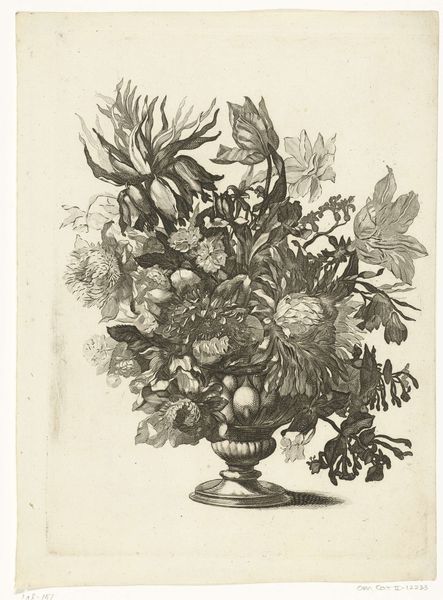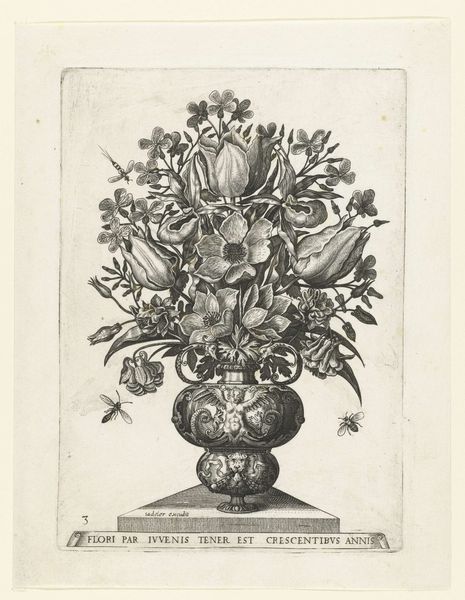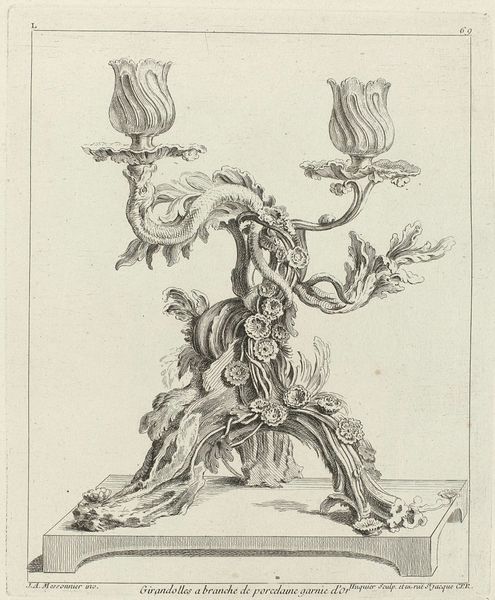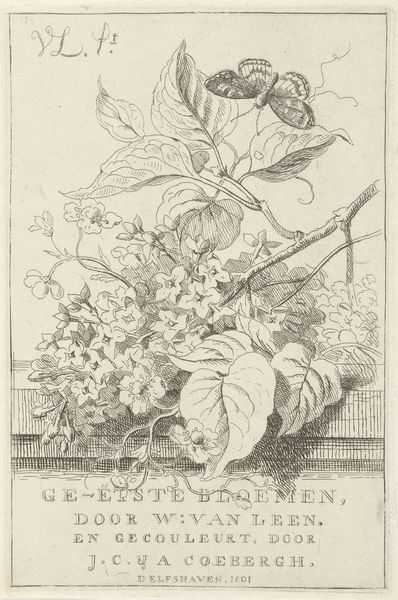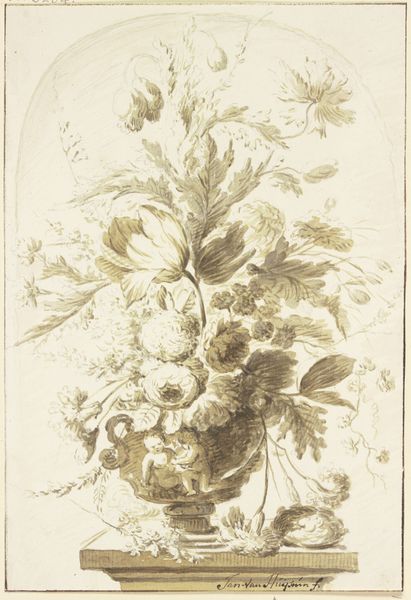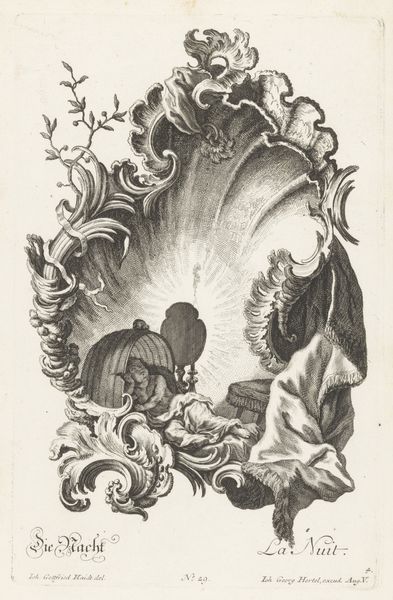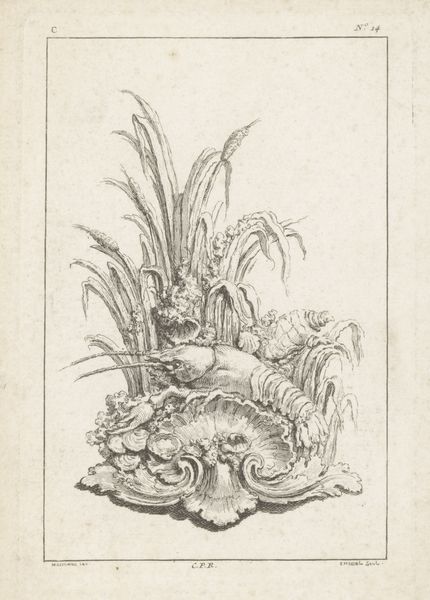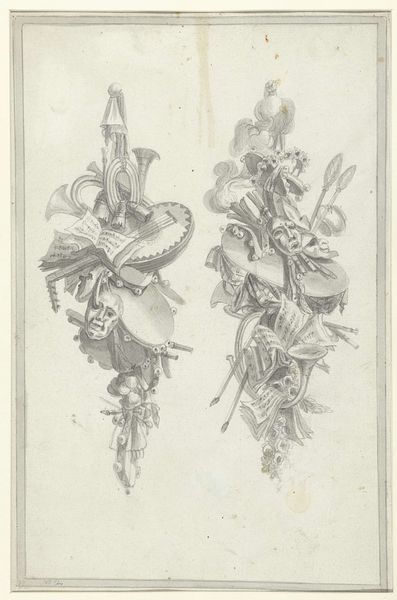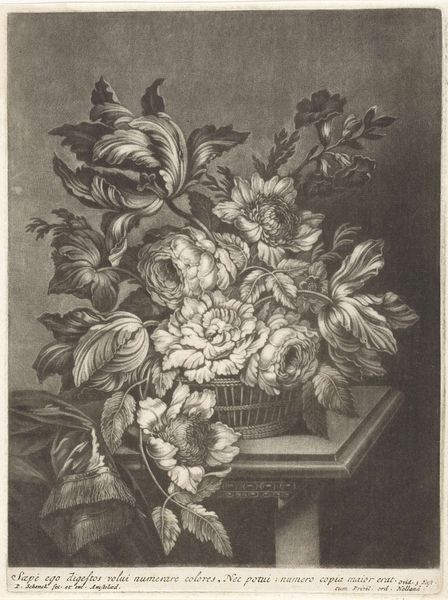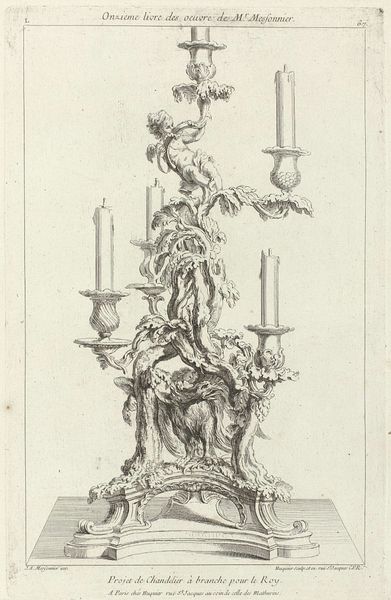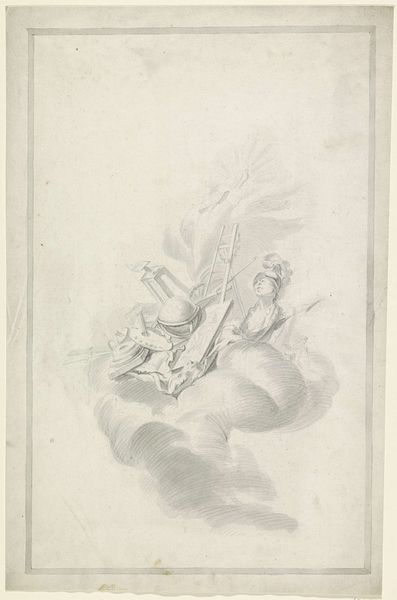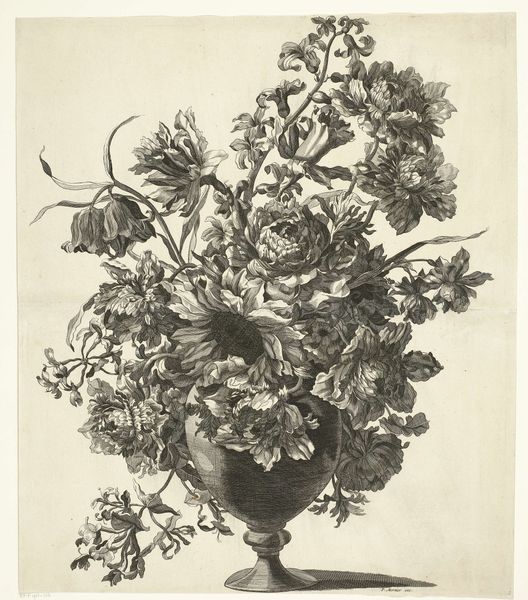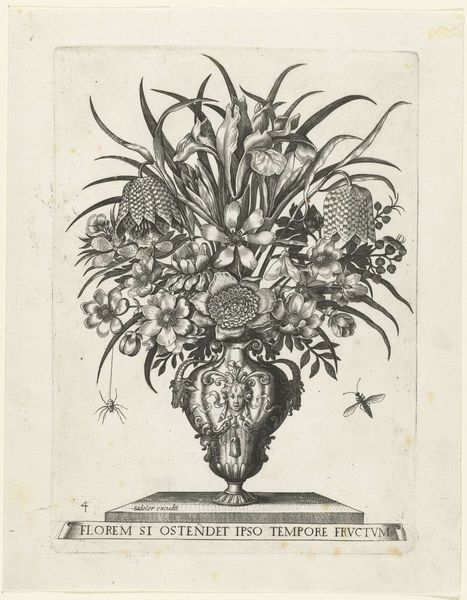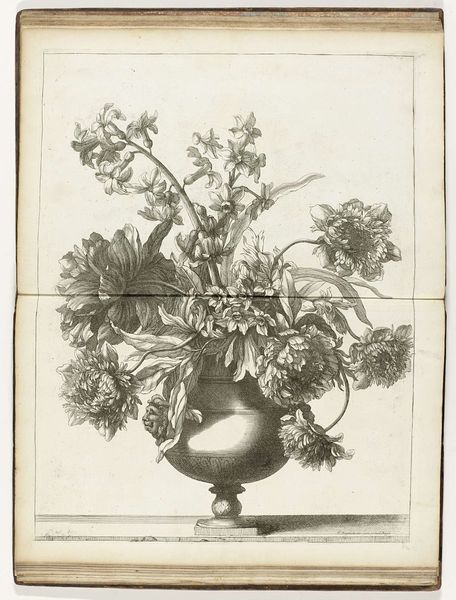
Dimensions: height 154 mm, width 122 mm
Copyright: Rijks Museum: Open Domain
Hendrik Nieuwenhuysen created this ornament with pomegranate, leaves and obelisk using etching in 1766. Images like this one circulated widely in the 18th century, and the architecture and design industries used them as inspiration. The visual language is heavily influenced by classical antiquity, referencing the art and design associated with the ancient Greeks and Romans. The obelisk, for instance, was a common architectural feature in ancient Egypt and was later adopted by the Romans. It’s worth thinking about the social and institutional factors behind this interest in the ancient world. Was this simply a matter of taste? Or did the revival of ancient forms serve social and political functions? Perhaps the turn to ancient Rome offered a powerful way to represent and legitimize social hierarchies in the rapidly changing world of 18th-century Europe. Understanding the meaning and impact of images like this requires social and institutional history.
Comments
No comments
Be the first to comment and join the conversation on the ultimate creative platform.
